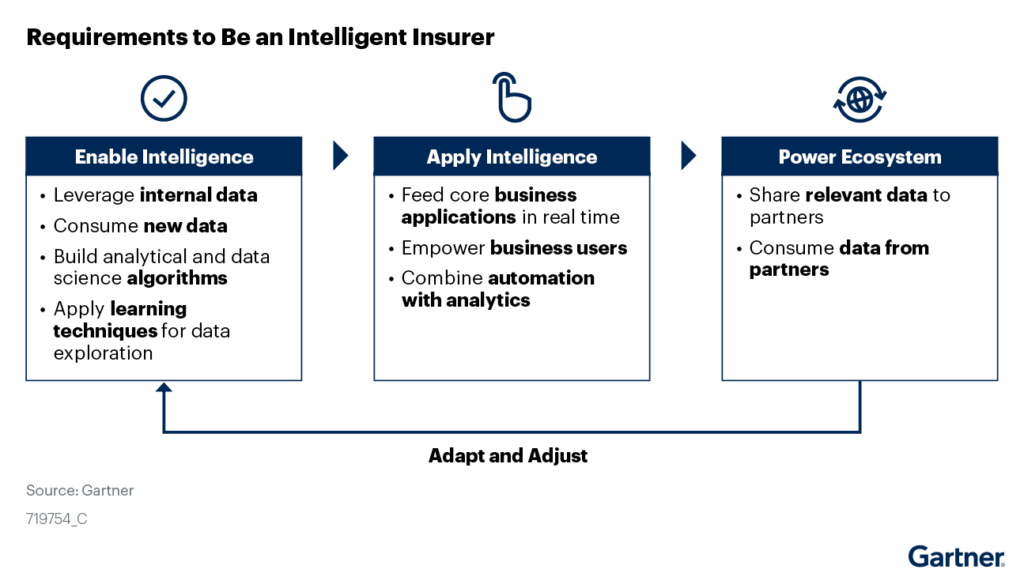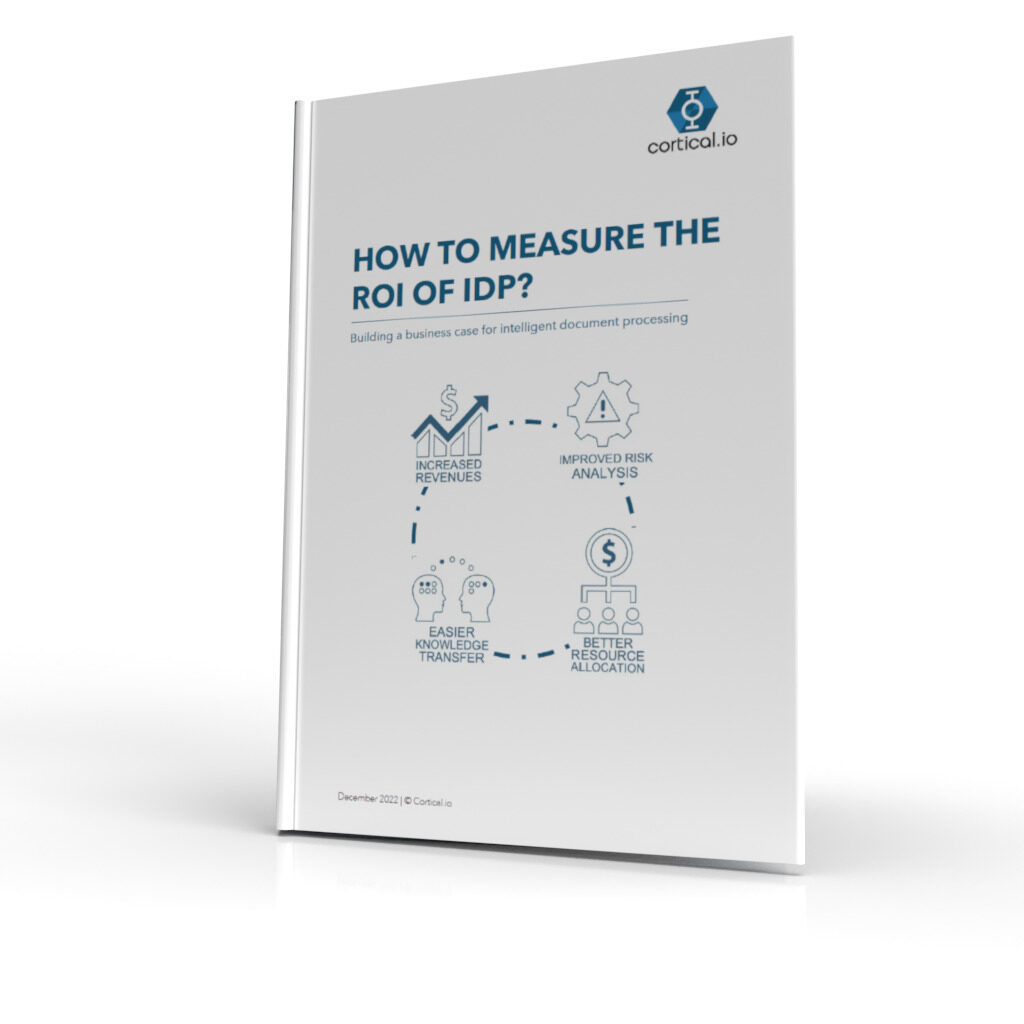In an era of rapid technological advancements, digital insurance is no longer enough. To thrive in the future, insurers must transform into intelligent entities that take a more aggressive approach to emerging technologies and dare to innovate. Intelligent insurance is the key not only to improving operational efficiency and profit margins, but also to exploring new business opportunities. Let us investigate what intelligent insurance actually is, the hurdles that lie ahead, and how forward-thinking insurers can overcome them.
What Is Intelligent Insurance?

For years, the onus was on insurance companies to become digital. Now, it seems we have transcended that, with 90% of senior leaders in the insurance industry saying they have pursued large-scale digital transformation in the past two years. Today, the next frontier is intelligent insurance.
Digital insurance focuses on replacing paper-based processes with online technologies to improve the speed and efficiency of insurance processes such as policy administration, claims processing and customer service. Intelligent insurance takes that one step further by leveraging advanced analytics, artificial intelligence (AI), and machine learning to make informed decisions, assess risks, detect fraud and personalize products and services. Intelligent insurance enables a high level of automation in document processing and decision-making, shifting human involvement from repetitive and tedious tasks to more strategic activities.
In customer service, for example, intelligent insurance is about building a holistic CX strategy by investing in technologies to facilitate triage, suggest next best actions and personalize customer interactions.
The Road to Becoming an Intelligent Insurer Is Paved With Challenges
According to Gartner, only 5% of insurers are positioned to be an “intelligent insurer” by the end of 2023. This isn’t surprising, as digital transformation did not happen overnight either. Considering how the widespread adoption of digital technologies in the industry started gaining momentum around the early 2000s, you could argue it took around twenty years. Moreover, the path to intelligent transformation is also paved with many roadblocks:
Lack of Vision
Without a clear vision, insurers are hesitant to invest in the necessary talent, technologies and strategies required to embark on their intelligent transformation journey successfully. Insurers need to adopt a forward-thinking mindset aligned with industry macrotrends, market conditions, and data and analytics best practices. Legacy modernization is not enough. Insurers must seek more strategic innovations in order to address changing customer needs and economic conditions.
Talent Gap
The insurance industry has been fighting ongoing talent shortages in both business and IT for years now. The Gartner 2021 CIO study found that the largest talent gap facing insurers was AI/ML—arguably the very cornerstone of intelligent insurance. Insurers need skilled professionals who can develop and implement intelligent systems and models to drive innovation and growth. Many roles that barely existed five years ago— chief data officer, for example — will soon be indispensable.
Lack of Clear Data Strategy
Data strategy goes beyond just having lots of data. Insurers need useful, actionable data and the right models to turn that data into intelligence that can be used across the enterprise to guide decisions. A McKinsey study of insurers found that the majority of investments in advanced analytics fail to drive significant value, citing data and talent among their top five challenges. Without a comprehensive data strategy and governance standards, insurers risk collecting data that is not clean, standardized, relevant, or accessible, making it difficult or even impossible to gain insights.
Lack of Alignment Between Business and IT
Intelligent transformation requires seamless collaboration between IT and business teams. Otherwise, this can hinder the implementation of new systems and technologies, increasing time and costs, and leading to frustration. Lack of alignment between business and IT is one of the main reasons why AI projects fail. A study identified several areas of opportunity for improving alignment between business and IT, including communication, corporate culture, and effective leadership. Insurers must bridge the gap and foster collaboration between the two to ensure that technology initiatives align with strategic goals and business objectives.
External Factors
External, and often unexpected, factors can block the road to intelligent insurance. When economic downturns and geo-political black swan events impact business priorities, this often takes precious resources away from digital transformation and intelligent insurance projects.

4 Initiatives To Become an Intelligent Insurer
Now that we have explored the challenges, let’s take a closer look at the opportunities that insurers need to embrace on their journey to intelligence.
1. Develop Advanced Digital Business Platforms
Improving customer service is the main business driver behind the adoption of digital business technology platforms, followed by improving operational efficiencies and reducing operating costs. A digital business technology platform (DBTP) encompasses new and existing technologies for transaction processing, information intelligence, customer engagement, ecosystem partners, and Internet of Things (IoT). Insurers can use DBTPs to create personalized offers, but also to shape new products and increase the share of revenues generated by digital channels.
2. Leverage Data, Analytics, and AI
Intelligent insurers can leverage the power of data, analytics, and AI to drive decision-making and enhance operational performance. According to a Gartner survey, already 43% of insurance companies had already invested in AI in 2022, and an additional 19% planned to do so by end of 2023. Until now, most of the AI projects of insurers focused on analyzing large datasets of numeric values to identify patterns and generate insights. The next step for intelligent insurers is to go beyond numerical analysis and statistics to explore semantics and leverage the wealth of information buried in text.
For example, intelligent insurers can implement semantic AI tools to improve the efficiency of their quoting process, mitigate risks and reduce gaps in coverage. Quoting group benefits is arguably one of the most challenging quoting processes, which involves analyzing many documents of variable types and structures. Semantic tools can help prepare more accurate quotes faster and close more deals by extracting, interpreting and grouping complex information found in terms and provisions.
FREE DOWNLOAD: Intelligent Insurance Case Study
3. Scale Automation Beyond Initial Use Cases
Intelligent insurers need to scale automation to improve their operational efficiency and customer experience. This will often involve thinking outside the box, fostering cross-team collaboration and looking beyond the scope of the initial use cases.
The group benefit example mentioned earlier illustrates how this can work. A team including the Head of Benefits, the AVP Quoting Operations & Strategy and the Quote Manager decided to take the semantic technology one step further, adding a business logic layer to automate part of the decision-making when quoting dental plans. They defined a custom set of rules to be applied to the extractions, on the basis of which the tool selects the best matching plan and pre-fills the appropriate quote template. The system provides a report allowing quote specialists to verify the selection. As a result, the quoting team has gained both in productivity – quotes can be submitted faster – and quality – quotes match the customers’ expectations better, positively impacting revenue growth.
4. Invest in APIs and Prepare for Open Insurance
A key trend in the insurance industry is sharing data through technology, also known as Open Insurance. This concept traces its origins back to Open Banking, where banking platforms and systems allow the integration of third-party services and products using APIs to improve speed, efficiency and costs.
APIs serve as the linchpin for connectivity among various components of an insurer’s digital business platform. For example, insurers can use APIs to automate underwriting and data verification processes. By using APIs to verify data in their underwriting process, insurers can accelerate policy delivery times. By integrating customer data and underwriting processes in one place, insurers can process claims faster and more efficiently.
The Future of Insurance Belongs to Intelligent Insurers
Or, to put it another way, the future of insurance belongs to those who have the vision to become intelligent insurers. By adopting a visionary mindset, investing in AI and automation technologies, fostering a data-driven culture, and leveraging strategic partnerships, insurers can navigate the changing landscape, stay ahead of the competition, and continue to meet the evolving needs of their customers. Through this transformative journey, insurers can secure their place at the forefront of the industry and shape the future of insurance.


